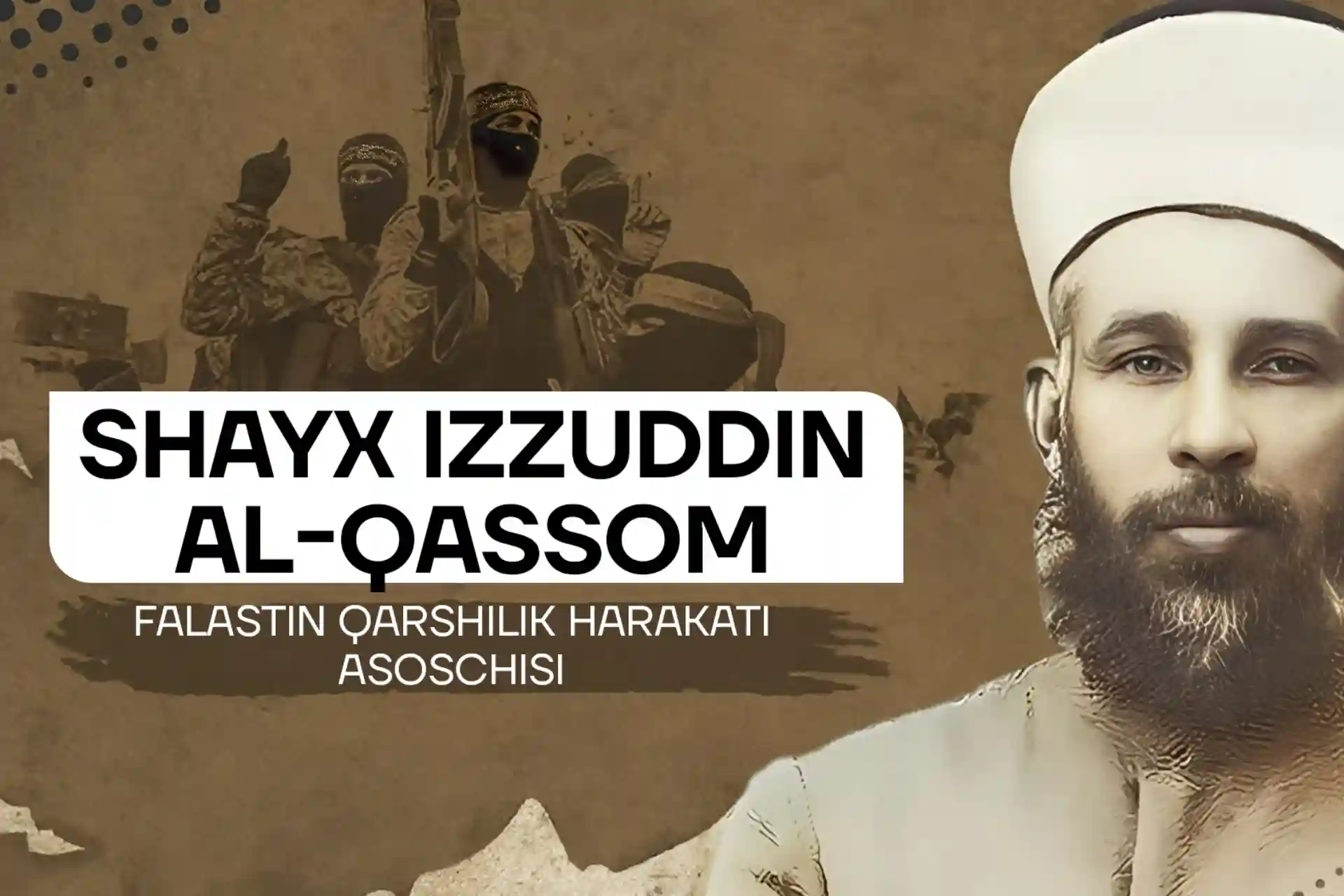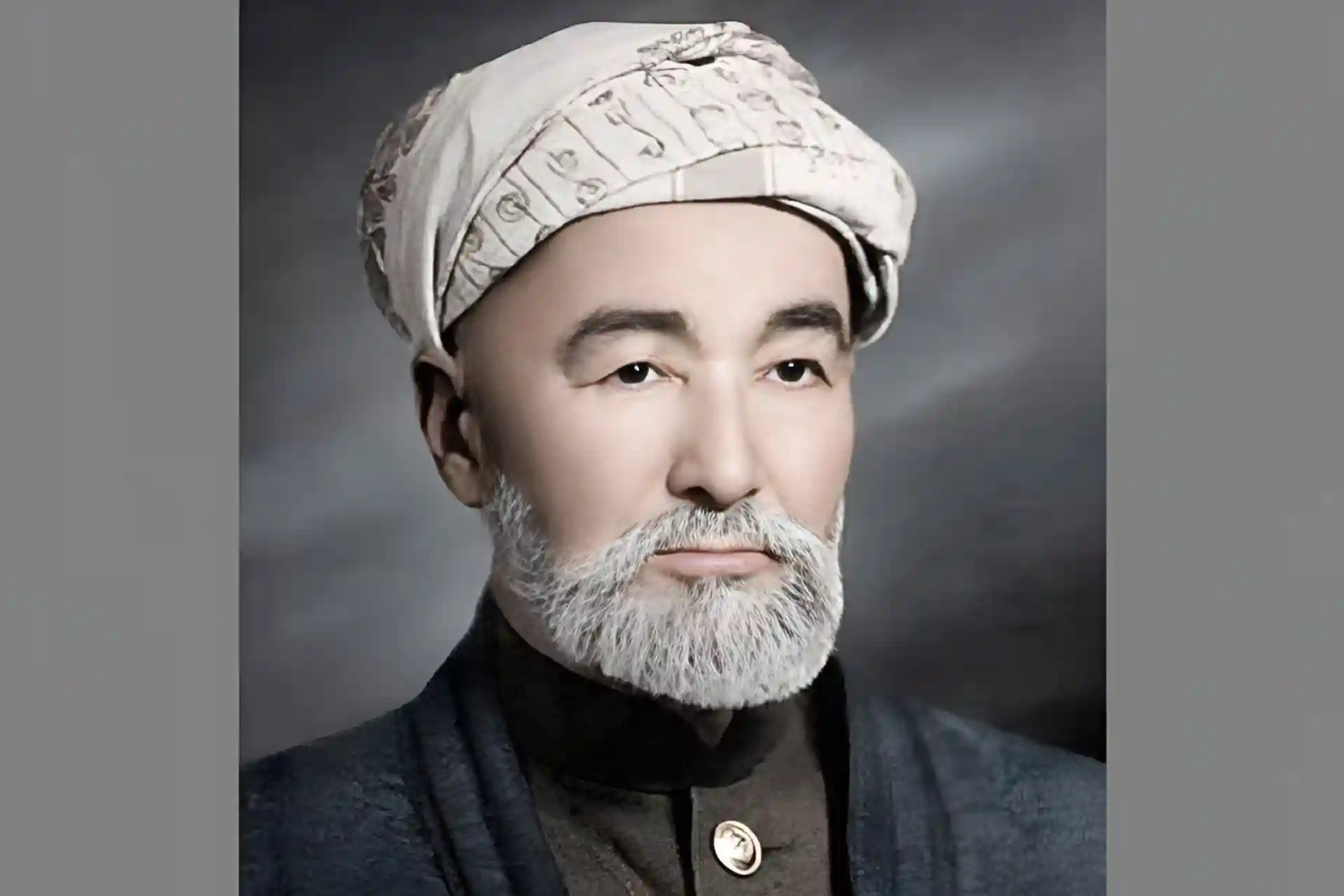11.12.2023 20:08
6309
Who is Sheikh Izzuddin al-Qassam, the founder of the Palestinian resistance movement?
The founder of the Palestinian resistance movement is Sheikh Izzuddin al-Qassam. Yesterday (11/20/2023) marked the 88th anniversary of the martyrdom of one of the founders and inspirations of this Palestinian revolution.
Early years Syria
Izzuddin Abd al-Qadir ibn Mustafa ibn Yusuf ibn Muhammad al-Qassam was born in 1882 (H. 1299) in the small port city of Jabla, located in the south of Latakia, in the west of Syria. He grew up in mosques and schools in the city where he was born and raised, received his primary and religious education there. Later, his father sent him and his brother Fakhriddin to study at Al-Azhar University in Egypt. Izzuddin spent the next 8 years of his life studying religious sciences (jurisprudence, hadith interpretation and other sciences) in this school, and it was in Al-Azhar that he first got acquainted with the ideas of "Islamic awakening".
He returned to his hometown of Jabla after obtaining an Ijaza (an international license certifying his qualifications) in Islamic sciences.
In those years, Egypt was under British rule. Sheikh Al-Qassam was surprised and deeply saddened to realize how the British introduced Western culture into this country and alienated people from Islamic values.
Young Sheikh Al-Qassam, who has deep knowledge and a broad worldview, started his work in his homeland with education, he began to teach not only the religion of God, but also simple reading, writing, arithmetic and other skills to his fellow citizens who did not have much education. Because in those years, the number of illiterate people was very large. In addition, he encouraged the people of his city to pray and fast during the month of Ramadan.
After some time, he became the imam of the Mansouri mosque in Jabla, due to which many people gathered around him, and he gained a great reputation as a result of his knowledge and sincere actions. People began to flock to listen to his sermons, not only from this city, but also from all the neighboring regions. He established very warm and friendly relations with everyone, people described him as a deep thinking, learned and righteous person.
The beginning of revolutionary activity Libya, Syria, Palestine
In 1911, when the national liberation struggle against the Italian invaders began in Libya, Sheikh Izzuddin al-Qassam organized large demonstrations in support of the Libyans in Syria, and collected donations to help the brothers in Libya. He sent weapons and other necessary supplies from the people of Syria to the brotherly people of Libya.
In addition to collecting weapons and money, al-Qassam called for volunteers for jihad (holy war) in Libya during Friday prayers. According to various sources, he gathered 60 to 250 Mujahideen volunteers in his district and asked the Ottoman government to allocate a ship to send them to Libya. But the nationalist, pan-Turkist government of the Young Turks that recently deposed Sultan Abdulhamid II paid little attention to the plight of the Arab regions. They refused to help al-Qassam as they concentrated on the Balkan frontiers and left Libya (then under Ottoman control) to the Italians.
Syria
In 1920, Syria was invaded by French invaders and controlled by the French Mandate, but Aleppo and Latakia proved to be regions where the population, led by Omar al-Bitar and Izzuddin al-Qassam, resisted fiercely. They fiercely resisted the invading aliens, successfully waged a guerrilla war against them for a long time. Over the years, Al-Qassam honed his leadership skills by directing the movement of a large number of his countrymen to the rebellion, mostly those he had recruited to volunteer to send to Libya, and ultimately useful in his homeland.
After Umar al-Bitar was sentenced to death by the French invaders and forced to flee to Turkey, his men also joined the ranks of Al-Qassam.
Qassam's armed men fought the enemy very successfully, but in time the French managed to drive them out of Jabla and forced them to relocate to Aleppo. Izzuddin's army, where he joined another revolutionary, Ibrahim Hananu.
Palestine
After the French successfully put down a Syrian revolt, Al-Qassam was executed in absentia for leading the revolt, which forced him to migrate to Palestine in 1921 (1340 AH). Izzuddin al-Qassam continued preaching at the local madrasa in the coastal city of Haifa.
Along with teaching people in the madrasa, the Sheikh also preached in Al-Istiqlal Mosque. In 1926, the scholar became a member of the Muslim Youth Society in Haifa and soon became its leader. In 1929, he was appointed Sharia judge. All these works allowed the sheikh to communicate with people, get to know them closely, establish strong ties with them, build bridges of trust and win their love.
Meanwhile, the Zionist threat in British-occupied Palestine was increasing day by day. Al-Qassam quickly realized the dangers of Jewish settlements being built on Palestinian land that Britain was ceding to Zionist settlers in small pieces. He felt the deplorability of the situation, especially when he interacted with former Palestinian farmers, who told them how the British had taken their property and given it to the newly arrived Jews.
Al-Qassam could not sit idly by as he watched the rapid "melting" of the Palestinian territories, and clearly realized that if British colonialism was not resisted, the Palestinian lands, where 95% of the population were Muslim, would soon fall completely into the hands of the Zionists from Europe.
Organization and training of resistance forces
Al-Qassam began to organize a secret military revolutionary movement, and the vast experience he gained from the revolution in Syria allowed him to provide military and religious training for the Palestinian Mujahideen.
Sheikh Izzuddin al-Qassam was exceptionally skilled in organization, personnel selection, leadership, supplies and arms. In addition, he paid great attention to the social life of his warriors, and tried to improve their living conditions by helping them and their families in various ways. He helped the poor, especially those who were deprived of everything after the British occupation, supported them, raised the levels of literacy and education, while increasing his comrades with new supporters.
Al-Qassam has several divisions in his revolutionary movement, such as the "revolutionary call department" which is responsible for recruiting new members, the "political communication department" which deals with the movement's political program, the "military preparation department", the "arms procurement department", and the "intelligence department". organized.
Guerrilla warfare
In 1935 (1354 AH), Al-Qassam began operations in West Bank cities such as Jenin, Nablus, and Tulkarm, carrying out dozens of successful attacks on British officers, destroying food routes, railways, and many other communications networks. In addition, Al-Qassam's troops identified traitors who collaborated with the British and destroyed them. The main fear of the British soldiers in those years was the night armies, when the forces of Al-Qassam struck fear and terror into their hearts in the pitch darkness.
As the operations led by Izzaddin al-Qassam became more successful, more and more people began to join his resistance movement.
Declaration of Holy War and Revolution
Around November 1935, 11 Mujahideen, along with Sheikh Izzuddin al-Qassam, formally declared jihad against the British occupiers in the West Bank city of Jenin and declared their intention to create an uprising and revolution in Palestine to overthrow the British Mandate.
After such a sensational statement, the British occupation government could no longer tolerate "these indignities" of the sheikh and realized that if he was not stopped, he would carry out his plans.
On November 15, 1935, the occupying British forces learned about the location of Sheikh al-Qassam through the intelligence network and began to conduct a military operation against him and his forces. After a long and fierce battle, the British suffered heavy losses. However, their vast superiority in numbers and weapons proved effective, and on November 19, 1935, they besieged Al-Qassam's forces, cutting off their communications with neighboring villages and completely encircling them.
Martyrdom
Al-Qassam, who was left in a difficult situation, had several options: either to try to flee in a cowardly way, or to surrender to the British government, or to continue fighting in an unequal battle. Al-Qassam and his brothers-in-arms decided to fight to the end.
For 6 hours, a small detachment of Mujahideen fought against the entire British army, and at least 15 British soldiers were killed. Unfortunately, Mujahideen Sheikh Izzuddin al-Qassam was seriously wounded in this unequal battle, and he drank the juice of martyrdom with two Mujahideen companions holding their weapons in their hands. All the survivors, including the wounded, were captured and sentenced to long prison terms.
The people of Palestine were stunned by the death of Sheikh al-Qassam. Many people from different parts of the world came to his funeral.
Al-Qassam's activity is alive
The Islamic resistance movement Hamas immortalized the memory of this hero and named the military wing of Hamas, one of the most militant military organizations in Palestine, Izzuddin al-Qassam in his honor.
Almost all Palestinian parties and movements except Hamas hold various events in his honor every year. The Palestinian people remember this noble warrior as a heroic person who fought for the independence of Palestine, the unity and freedom of Islam and Muslims.


